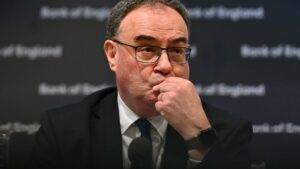
Britons may soon shoulder the burden of an £85 billion bill as the Bank of England revises its estimates for losses on bond sales incurred during financial and pandemic upheavals.
Initially projecting £80 billion in losses, the Bank now foresees a higher figure for the losses on its bond portfolio, dubbed the asset purchase facility, over the next decade. This estimation, however, has fluctuated; just last year, it anticipated losses exceeding £100 billion.
Taxpayers are poised to cover potential losses under an insurance agreement established between the Bank and the Treasury when the asset purchase facility programme commenced 15 years ago.
While the Bank accrued substantial profits of £123.8 billion during the programme’s first 15 years, funneling this cash into the Treasury, recent developments signal a shift. A surge in interest rates, aimed at curbing inflation, has led to a decline in bond prices, potentially crystallising future losses for the Bank. Moreover, the interest earned on the Bank’s bond portfolio lags behind the interest paid out on commercial bank deposits.
Analysts propose mitigating the public finances’ exposure to interest rate fluctuations by paying interest on only a portion of commercial banks’ deposits. However, this approach essentially levies a tax on banks, which have thrived on increased loan charges amid rising borrowing costs.
Presently, the Bank plans to divest £100 billion of bonds annually, having peaked at nearly £900 billion of government and corporate bonds on its balance sheet.
Quantitative easing, the bond-buying programme’s moniker, aimed to invigorate the economy by driving down interest rates and injecting liquidity into banks. Deployed during the 2008 financial crisis, the pandemic, and briefly following Liz Truss’s mini-budget, it remains a pivotal tool in navigating economic turbulence.
Read more:
Taxpayers Face £85 Billion Bill as Bank of England Projects Losses on Bond Sales






